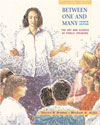 |  Between One and Many: The Art and Science of Public Speaking, 4/e Steven R. Brydon,
California State University, Chico
Michael D. Scott,
California State University, Chico
Language: Making Verbal Sense of Your Message
Learning ObjectivesAfter reading this chapter and reviewing the learning resources on your CD-ROM and at the Online Learning Center, you should be able to:
1Construct examples that illustrate the relationship between language and thought. |
 |  |  | 2Describe the role language plays in relating to cultural, demographic, and individual diversity. |
 |  |  | 3Describe the "different voice" that characterizes women's and men's speech. |
 |  |  | 4Differentiate between denotative and connotative meaning. |
 |  |  | 5Use rhetorical devices such as metaphor and simile to vary language intensity in your speeches. |
 |  |  | 6Use concrete language, as well as contrast and action, to reduce uncertainty on the part of your audience. |
 |  |  | 7Use verbal immediacy and transitional devices in your speeches. |
 |  |  | 8Avoid marginalizing and totalizing language, using inclusive language instead. |
 |  |  | 9Avoid sexist and stereotypic language. |
|



 2003 McGraw-Hill Higher Education
2003 McGraw-Hill Higher Education